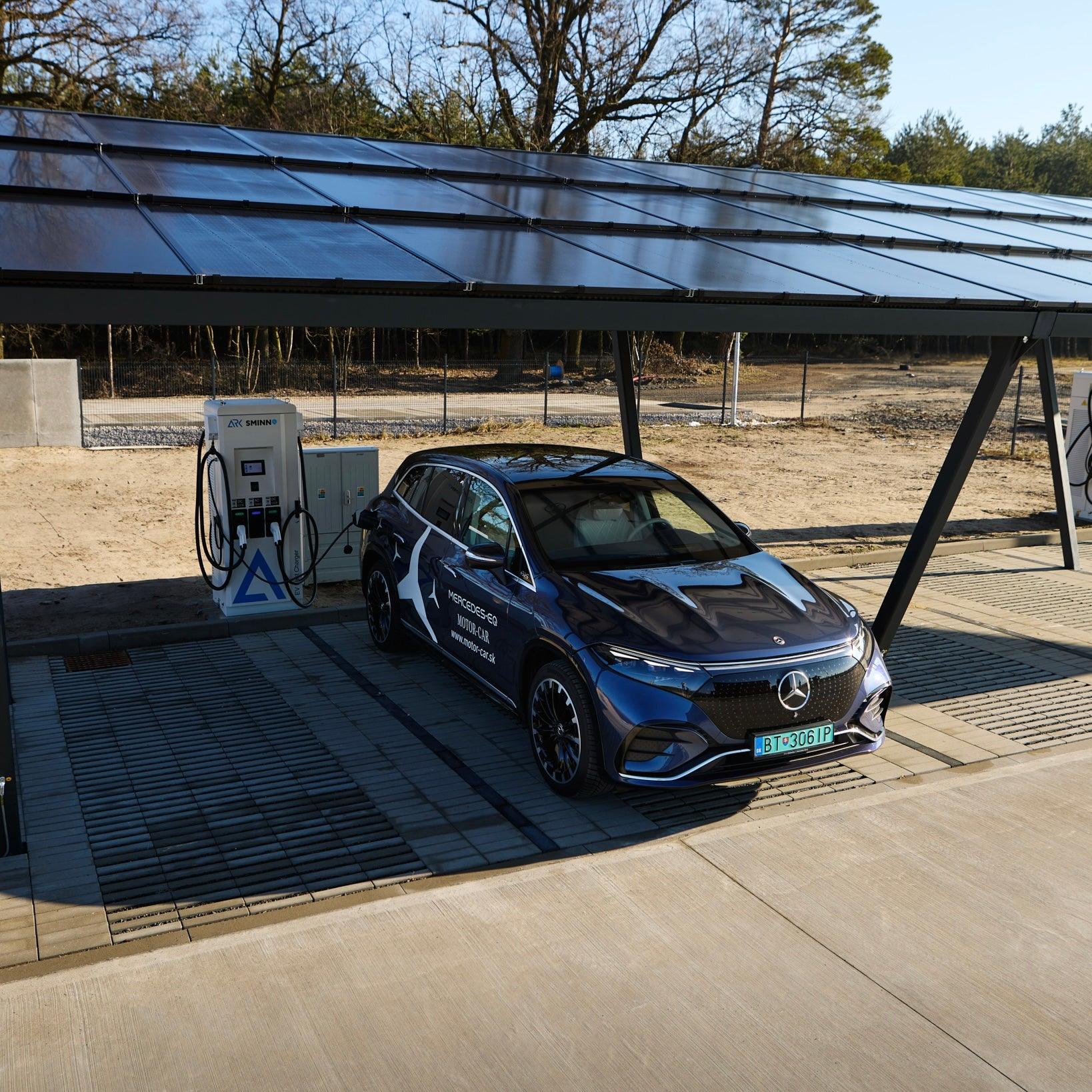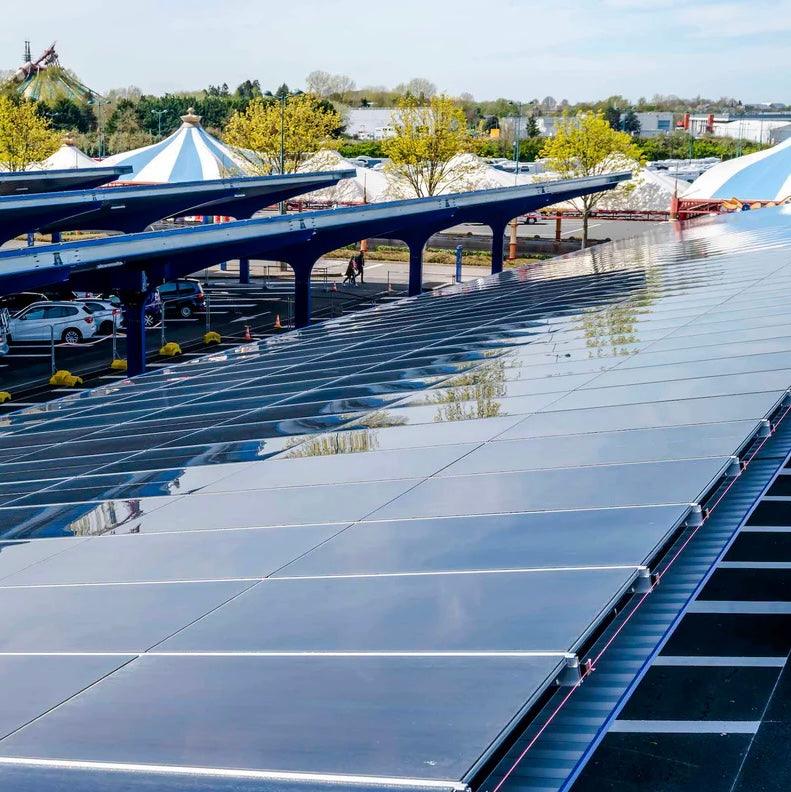Today's turbulent business environment is particularly specific for the agricultural sector because, in addition to global macroeconomic factors, it is also affected by fluctuating commodity prices, a changing regulatory environment and the unpredictability of the climate.
One of the options to better manage the current period of instability for agribusinesses is the emphasis on cost optimization In addition to direct costs, such as the costs of seeds, fodder and fertilizers, energy costs make up a significant part of the total expenses of agricultural entities.
Electricity prices have already stabilized, but together with distribution fees, they contribute to the growing overhead costs of farmers, which affects their economic results. However, there are solutions that lead to significant savings in electricity. The vast and simple roof surfaces of agricultural buildings offer space for the use of an integrated solar roof system, which provides farmers with a significant opportunity to reduce energy costs.
Why is it worth investing in solar panels?
In the field of agriculture, operations require significant energy to operate, which can be obtained from solar energy, creating an opportunity to reduce electricity costs. Optimum use of solar energy involves harmonizing its daily production with the energy needs of the building. This approach minimizes the need to draw more expensive energy from the grid, which can cost many times more than electricity produced from the sun. The revolutionary solution of integrated photovoltaic panels with the patented Click-On® system. A roofing system that has a definite advantage over standard solutions of photovoltaic systems for roof reconstructions.
Not every farm building is compatible with conventional PV panels Compatibility of conventional PV panels with agricultural buildings is fraught with challenges, including limitations due to added extra weight especially in older structures, as well as aesthetic issues in the countryside. This is no complication for the BIPV system. One of the main problems is the structural compatibility of agricultural buildings.
Many of these structures may not have the necessary strength to support the additional weight of standard photovoltaic systems (BAPV). This problem often requires significant structural reinforcements before starting the PV installation, which leads to increased costs and increased installation complexity. In addition, the aesthetic and design aspects of ordinary solar panels cannot be overlooked. These systems can have a visually disturbing effect, which is especially problematic in rural environments, where preserving the aesthetics of the landscape is key. This is even more true in areas with historical or culturally significant agricultural buildings or in areas where tourism plays an important role.
Solutions from Europe
The Estonian manufacturer of integrated solar panels, Solarstone, operating in 10 markets together with its partner for the Slovak and Czech markets, Hybrid House, offer a new dimension in the construction industry. They bring universal BIPV solutions. They are simple, aesthetic and scalable. The patented and award winning Solar Full Roof technology opens up previously unimaginable possibilities with unlimited domestic and commercial installations. These are solar roof solutions that can be integrated into the building structure, making them lighter and suitable for older buildings. The unique Solar Full Roof™ is a 2-in-1 solar panel roof that replaces traditional roofing materials and is installed directly on the battens. Incorporating solar panels directly into building facades or roofs does not require additional land or space to accommodate large solar farms. This approach preserves natural habitats and supports biodiversity, unlike large land-based solar farms that can sometimes disrupt local ecosystems. Solarstone Solar Full Roof™ weighs approximately 12.5 kg/m2, which is more than standing groove steel or corrugated iron, but far below the weight of a double layer roof. If your energy needs remain high even in the winter months, it is recommended to install Solar Full Roof™ on the facade of the building. This approach is beneficial because energy production from facade-mounted panels tends to be more consistent during the winter. While overall energy production may be lower compared to rooftop panels, facade installations avoid the common problem of snow cover, which can significantly reduce the efficiency of roof-mounted solar panels. In cases where the roof area is inadequate or the structure cannot support the weight of the Solar Full Roof™ system, Solarstone and HybridHouse offer an innovative alternative with their Solar Carport solutions.
Using the same waterproof solar roof technology, these shelters are designed to not only generate electricity, but also facilitate charging infrastructure for electric vehicles or for self-consumption. Thanks to their dual functionality, the carports serve as both a power generation unit and a protective cover. They provide ample space for parking vehicles and equipment, or for storing hay and other materials, either temporarily or long-term. Thanks to this design, clients can harness solar energy without sacrificing valuable space on the ground. Solar carports come in a standard design, but tailor-made solutions are available for commercial applications.
Economic Impact of Integrated Photovoltaics and Government Financial Incentives
Rising electricity prices, along with the need for greener practices, have prompted farmers to consider solar energy as a viable alternative. Ecological procedures and practices, especially those applied in agricultural practice, paradoxically tend to increase costs and do not always meet the business logic of the agricultural manager. Building-integrated solar systems, primarily those offered by Solarstone and HybridHouse, are particularly beneficial, as these systems, including the versatile Solar Full Roof™ and practical Solar Carport solutions, provide efficient energy production while addressing the structural and spatial constraints typical of agricultural environment. Evaluating the economic impact of building integrated photovoltaic systems (BIPV) includes consideration of initial costs and long-term financial benefits. Although the initial cost of BIPV may exceed that of standard solar installations, the subsequent savings and benefits often compensate for this higher investment. This investment should be seen as a dual purpose: it is not only a solar generator, but also roofing material.
When the added value of the property is taken into account, the electricity savings tric energy, the true value of the investment becomes more apparent. In areas with net metering principles, BIPV can generate additional income by selling excess energy back to the grid, creating a stable source of income over time and increasing the financial attractiveness of BIPV. Support for the production of sustainable energy from state and European sources is far from over, and in the future we expect further incentives, in the form of challenges or tax deductions, for environmentally sustainable and energy-efficient construction procedures. BIPV systems are fully certified and eligible for all types of incentives, further reducing the net cost of their installation. The most current in this period is the support provided in the form of a non-refundable financial contribution for photovoltaic systems with an output of 1 kW to 99.9 kW through the agricultural and payment agency. The total authorized cost of this support is €84,453.93, which represents a significant financial boost for the applicants. These funds allow applicants to invest in modern and ecological solutions in the field of energy, which contributes to environmental protection and sustainable development. One of the primary advantages of building-integrated solar panels lies in their potential for efficient installation, which translates into potential cost savings. Less time on site can mean reduced labor costs, faster project turnaround and, in the case of commercial projects, a faster return to operational status.





Leave a comment
This site is protected by hCaptcha and the hCaptcha Privacy Policy and Terms of Service apply.